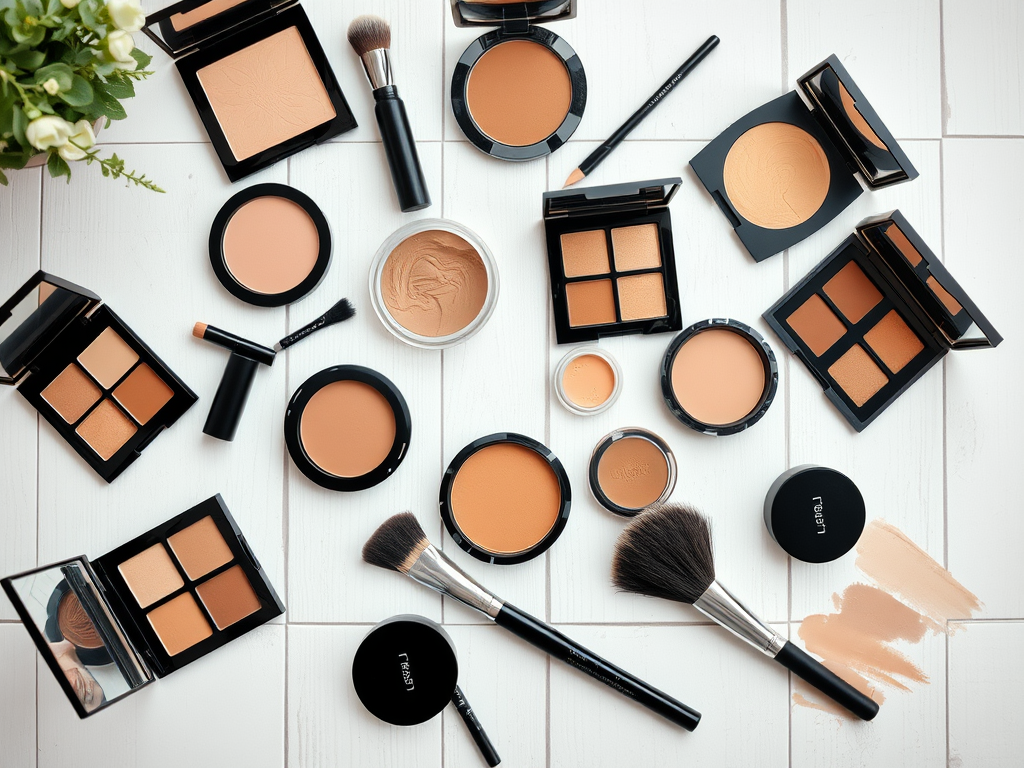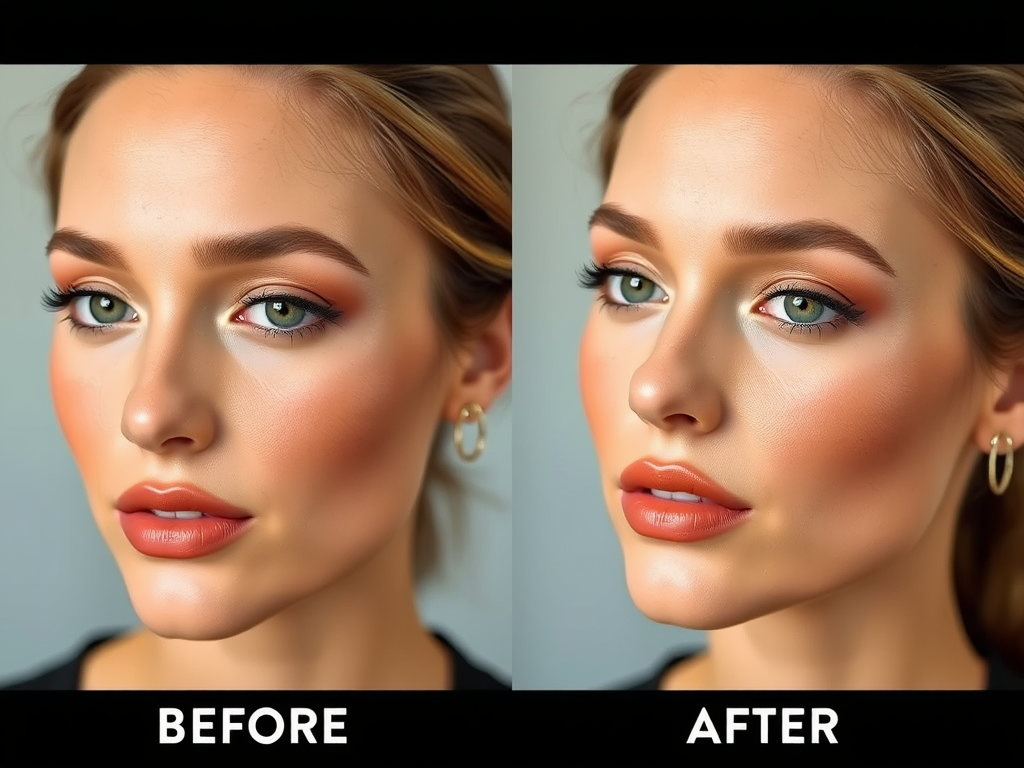In the world of makeup, the terms ‘contour’ and ‘bronzer’ are often thrown around, sometimes leading to confusion even among beauty enthusiasts. While both products play vital roles in enhancing the skin’s appearance, they serve distinct purposes. Understanding the unique functions of contour and bronzer can help you achieve a more polished and sculpted look. Indeed, mastering these techniques can elevate your makeup game from average to awe-inspiring. Join us as we explore these essentials, unraveling their differences and how best to use them in your beauty routine.
When applied correctly, contour can redefine your facial structure, giving it the appearance of being more angular and slim. Conversely, bronzer infuses warmth and a sun-kissed glow to the skin, making it seem more radiant and healthy. Knowing when and where to apply each can be the key to achieving that flawless finish you desire. Whether you’re prepping for a casual day out or a glam night, understanding these nuances will allow you to tailor your approach accordingly. So, let’s dive deeper into contouring and bronzing!
What is Contour?

Contouring is primarily about creating the illusion of depth and definition on the face. By using darker shades than your natural skin tone, you can sculpt areas like the cheekbones, jawline, and nose. The correct contour can enhance your features and shift the focus to your most striking assets. This technique is most commonly utilized in highlighting the structure of the face, bringing a sense of sleekness to your look. Contour products can come in various forms including creams, powders, and even sticks, each having its unique application methods and finishes.
Choosing the right contour shade requires some understanding of your skin tone. Here are some tips for making an informed decision:
- For fair skin, opt for a contour that is one to two shades darker than your foundation.
- Medium skin tones can use a contour that leans towards a neutral or cool undertone for a more believable shadow effect.
- If you have deep skin, choose a rich, warm contour to enhance your natural features.
When deciding between cream and powder products, consider your makeup style:
- Cream contours are more blendable and provide a dewy finish, perfect for dry skin.
- Powder contours offer a matte finish, helping to control shine and are ideal for oily skin.
What is Bronzer?

Bronzing is about adding warmth and a golden hue to the skin—like a gentle kiss from the sun. Unlike contour, which creates shadows, bronzer adds a glow that lifts your face and enhances its natural radiance. Typically, bronzers come in shades of golden brown, copper, or peach tones, differing from the cooler tones found in contour products. It’s essential to choose the right bronzer to harmonize beautifully with your skin’s undertones. With bronzer, the goal is to evoke a sun-drenched, healthy appearance, making your skin look vibrant.
Bronzers come in various formulations. Each type has its suitable applications, depending on the look you wish to achieve:
| Type | Texture | Finish |
|---|---|---|
| Powder | Silky | Matte or Shimmer |
| Cream | Rich | Dewy |
| Liquid | Fluid | Sheer |
Each of these formulations has its unique characteristics, making them suitable for different preferences and skin types. Choosing the right bronzer not only defines your look but also enhances your overall makeup application process.
Key Differences Between Contour and Bronzer
The primary differences between contour and bronzer stem from their intended effects and applications. Contour emphasizes the shadows, making it ideal for sculpting the face to achieve an angular appearance. In contrast, bronzer adds warmth and a natural glow, illuminating the skin like sunlight. Here’s a quick breakdown of their differences:
- Contouring is darker and cooler, while bronzers are warmer and lighter.
- Contour is used to create shadows, whereas bronzer is used for warmth.
- Apply contour primarily to the hollows of the cheeks, side of the nose, and jawline; bronzer is typically applied on the high points of the face such as the cheeks, forehead, and nose bridge.
When to Use Contour and Bronzer Together
Using contour and bronzer together can create a balance between sculpted features and a healthy glow. To achieve the best results, it’s recommended to first apply your contour to the appropriate areas, allowing the darker base to create a structured facade. Following your contour, you can use bronzer to touch up the high points of your face, ensuring there’s a seamless transition between shadows and warmth. Here are a few makeup looks that effectively combine both:
- Natural Day Look: Light contour with minimal bronzer for a fresh, subtle appearance.
- Glamorous Evening Look: Stronger contouring paired with a shimmery bronzer for a radiant finish.
- Summer Vibe: A bronzer-heavy look that maintains subtle contouring for a sun-kissed glow.
Conclusion
In summary, contour and bronzer are complementary products that, when used correctly, elevate your makeup aesthetics. Contour defines and sculpts, while bronzer adds life and radiance to your skin. As you integrate both products into your beauty routine, consider the key differences and best practices outlined in this article. Developing an intuitive understanding of contouring and bronzing will reflect in how you approach makeup, allowing for creativity and personal preference to shine through. So grab those brushes, and let your artistry flourish!
Frequently Asked Questions
- What is the main function of contour in makeup? Contour is used to create shadows and define the structure of the face, giving a more sculpted appearance.
- Can I use bronzer as contour? While bronzer can add warmth, it should not replace contour, as it does not create the same shadow effect.
- Are bronzers only for the summer? No, bronzers can be used year-round to add warmth to the complexion, though the shades may vary with seasonal changes.
- Do I need both contour and bronzer in my makeup routine? Not necessarily; it depends on your makeup preferences and the look you want to achieve.